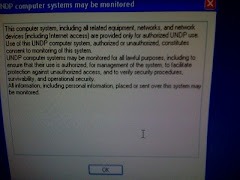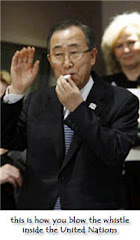Friday, April 16, 2010; 5:54 AM
TOKYO -- An "external explosion" probably sank a South Korean naval ship three weeks ago near a disputed sea border with North Korea, a government investigator said Wednesday in Seoul.
The announcement increased suspicion that North Korea was involved in what has been described as the worst naval disaster in South Korea's history. At least 38 sailors were killed, with eight others missing. Rescuers found 58 survivors.
North Korea's possible link to the ship's sinking has halted U.S. efforts to persuade Kim Jong Il's government to rejoin six-party nuclear disarmament talks. It also raises difficult questions about what, if anything, South Korea and the United States might do to retaliate against an unpredictable dictatorship that maintains an artillery arsenal capable of killing many thousands of civilians in Seoul.
The wrecked stern of the 1,200-ton Cheonan was pulled from the Yellow Sea on Thursday, giving South Korean experts their first chance to examine what ripped the ship apart on March 26. The ship sank during a routine patrol near the North-South maritime border that has been the scene of three bloody naval skirmishes between the two Koreas.
Military officials in Seoul have speculated that the ship was struck by a torpedo or collided with a mine. But the governments of South Korea and the United States have taken pains not to accuse the North of involvement, saying they want specialists to conduct a thorough investigation. Experts from the U.S. and other countries are participating in the investigation.
That cautious tone continued Friday, with state investigators saying they needed more time before drawing a final conclusion.
Yet there was a slightly harder edge to comments by Defense Minister Kim Tae-young, who said that once his government determines what caused the explosion, "we will respond in a very clear and firm manner."
Kim, who previously raised the possibility that the ship may have been sunk by a torpedo or a mine, said Friday the incident had created a "grave national security situation."
While North Korea has not commented publicly on the incident, its diplomats have told Chinese officials that the North was not involved, according to reports in the South Korean
During a briefing in Seoul, South Korea's investigative team said the sinking of the Cheonan did not appear to have been caused by an on-board accident or by running aground.
"There is a high possibility of an external explosion rather than an internal explosion," said Yoon Duk-yong, co-head of a state investigation team. "A strong force was applied to the left side of the ship, leaving the hull and iron sheets curved inward. This kind of destruction is caused by an external explosion."
He said evidence gathered from wreckage showed a low probability that the ship had sunk because of an internal blast, metal fatigue or collision with a reef. The ship's ammunition room, its fuel tank and diesel engine room were not damaged, he said, noting that there was no indication of an internal fire.
It may take months to determine precisely what sank the warship. Experts have said underwater mines left over from the Korean War in the early 1950s could still be in waters where the ship sank. Most speculation, though, has focused on the possibility of a torpedo attack.
"Small North Korean submarines have ventured into South Korean waters in the past," said Kwon Tae-young of the Korea Research Institute for Strategy, a think-tank in Seoul. "But to know the precise cause, scientific research would need to identify torpedo debris."
Hard evidence of a North Korean torpedo or mine, if it could be found, would not clarify how South Korea or the United States should respond, Kwon said.
"Even if North Korean involvement becomes clear, a military option will be hard to execute," he said. "It's a very complex situation. You have to consider your allies, the socio-economic impact and also gauge the military will of the other side."
North Korea has for decades disputed its border in the Yellow Sea with the South. Known as the Northern Limit Line, it was drawn by the U.S. military at the end of the Korean War in 1953.
The North cultivates a reputation for hair-trigger belligerence. Last year, it ignored U.N. resolutions by exploding its second nuclear device, launching a long-range ballistic missile and test-firing a number of short-range missiles into international waters.
Given to rhetorical excess, it often threatens South Korea and the United States with "all-out war." The North has also said it has the ability to turn Seoul, with a metro population of about 22 million and located just 35 miles from the border, into "a sea of fire."
That is not an empty threat, according to many military analysts.
North Korea has moved about 70 percent of its military units and up to 80 percent of its artillery to within 60 miles of the border, according to the Strategic Studies Institute, a research arm of the U.S. Army War College.
Special correspondent June Lee in Seoul contributed to this report.
















































No comments:
Post a Comment